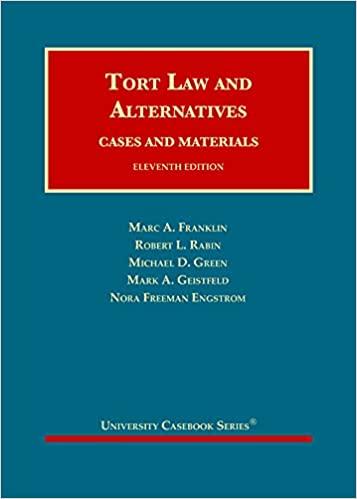Question
Business law case study, the case describes mid-September 2018, reports surfaced that The Coca-Cola Company (Coca-Cola) was monitoring the cannabis industry and was interested in
Business law case study, the case describes mid-September 2018, reports surfaced that The Coca-Cola Company (Coca-Cola) was monitoring the cannabis industry and was interested in producing cannabis infused drinks using the non-psychoactive ingredient in marijuana that treated pain but didn't get the user high. Coca-Cola was in search of new alternatives to offset the drag on its soft drinks sale caused by consumer aversion toward carbonated, sugary drinks and it reportedly considered the booming marijuana industry to be a good source of revenue and profits for the company. According to the reports, this decision was taken as a punt for the distant future, when there would no longer be any soda-drinking customers to fall back upon. Is it worth the risk for Coca-Cola to enter into the cannabis market? This case study discusses the several reasons that could have triggered Coca-Cola's interest in entering the cannabis market by producing cannabis infused drinks. It also hints at the potential of the cannabis market, the growing interest of beverage companies in this space, and its expected growth in future. The case discusses the potential implications which this deal might have on the company, thereby enabling the students to discuss whether it would be a feasible option for Coca-Cola to adopt.
Question 106 Is it safe to give valproic acid to infants below 12 months of age? Question 107 How many times must the liver transaminases (SGOT and SGPT) rise to justify a discontinuation of valproic acid therapy in children? Which of these enzymes is more sensitive and reliable in this situation? Question 108 1. Does valproic acid block the photosensitivity phenomenon in reflex epilepsy? 2. Can a patient with this photosensitivity be safely exposed to computer games or other photic stimuli when receiving valproic acid treatment? 3. Does the photosensitivity phenomenon occur in partial seizures? Question 109 1. Can an epileptic fit be induced in idiopathic and symptomatic focal epilepsy syndromes by flickering lights? 2. Is valproate effective against the photosensitive phenomenon (seizure induction by flickering light)? Question 110 How much time should one give before a loading dose of phenytoin is judged to be ineffective in controlling seizures and an alternative should be instituted? Question 111 What is the maintenance dose of phenytoin in seizures arising as a complication of chronic renal failure? Question 112 I know that the loading dose of phenytoin in status epilepticus is 20 mg/kg with an upper limit of 1000 mg but if the same situation arose as a complication of chronic renal failure (on regular dialysis), should this dose remain the same or be reduced? If reduced, what should the dose be? Neurological disease 21 233 Question 113 1. What is the most effective antiepileptic for a patient with simple partial motor status epilepticus who is not responding to a loading dose of phenytoin? 2. How long does phenytoin, given in a loading dose, take to work? Question 114 Is valproate effective if given rectally in status epilepticus and, if so, what dose is recommended? Question 115 In simple partial motor status epilepticus, if the patient does not respond to diazepam and phenytoin, is it justifiable to proceed to anaesthetic medication?
Step by Step Solution
There are 3 Steps involved in it
Step: 1

Get Instant Access to Expert-Tailored Solutions
See step-by-step solutions with expert insights and AI powered tools for academic success
Step: 2

Step: 3

Ace Your Homework with AI
Get the answers you need in no time with our AI-driven, step-by-step assistance
Get Started


